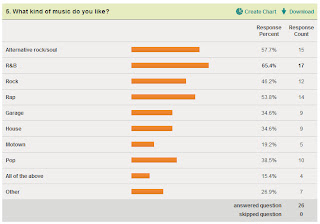Analysing magazine articles
The article focuses on the bassist of Fallout Boy Pete Wentz. They cover the musical genres of alternative rock, punk and pop. As the article is centred on him, the target audience will be fans of his music and people with an interest in rock, pop and punk.
The lexical choice in the article is quite verbose which implies the articles and magazine is directed at an educated, well-read audience. Words like “laceration” and “divulge” indicate the article is a more serious one, aimed at an older audience. The quote from the bassist on the other hand uses a colloquial lexis; he says he was “bummed out”. The word choice would be familiar with readers, as it would be commonly used among them.
The writer of the article sets a knowledgeable narrative tone. It’s very detailed as it’s filled with facts about the bassist; “Patrick Stump started work on his debut album… Following an altercation in a New York City night club… Pete started writing songs for a new project…”. The quality of the writing is very professional, using formal language and Standard English. It uses paragraphing well to add professionalism.
The layout of the article is columned, replicating a newspaper, which reiterates the seriousness and sophisticated nature of it. Throughout the magazine the same font is used which creates consistency. Above the article, on the same page, a quote has been depicted and used a title to point out what the item is going to be about. The first two words of the article are in the same colour as the title and it is bigger and in capitals. This is done to grab attention and to influence buyers to read it.
The whole page is entirely made up of text. As it is columned it implies readers will be familiar with the layout from reading broadsheet newspapers. It also suggests their readers will be more educated as it follows a mature format, integrating quotes from a previous interview rather than a simpler ‘interviewer –interviewee ‘arrangement.
The image of the bassist is a positive one. It is done professionally rather than one taken by the paparazzi. This projects an optimistic view of the rock star which contrasts with the title of the article saying, “I was at rock bottom”. It shows the writer is on the Wentz’s side.
There’s a sub-heading summarising the focus of the article and it’s saying there is an insight into the bassist life straight from the man himself.
The article itself is very detailed, providing facts upon facts about the bassist. Prior knowledge about Pete Wentz would be beneficial to the reader however it isn’t a necessity for understanding and enjoying the article. It gives names: “Craig Owens”. It gives events: “...altercation at a New York City night club”, it gives places: “...a family holiday in Jamaica” etc.
An overall evaluation of this article shows the magazine stays true to its initial target audience, featuring an article on alternative rock bassist Pete Wentz in a positive light. It radiates a classy, intellectual commentary keeping the sophisticated tone of the magazine.




















